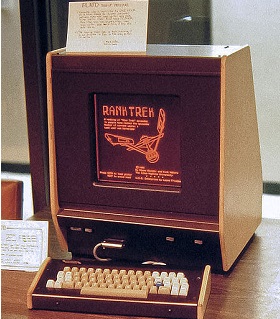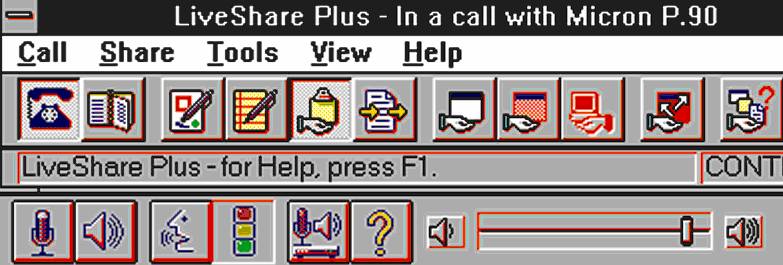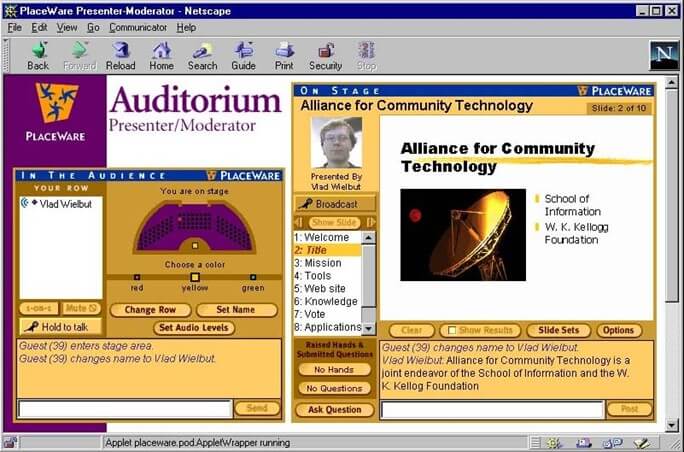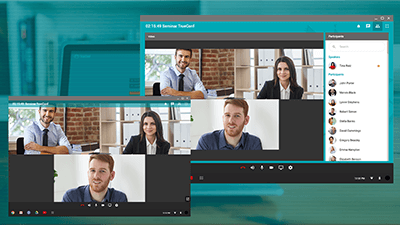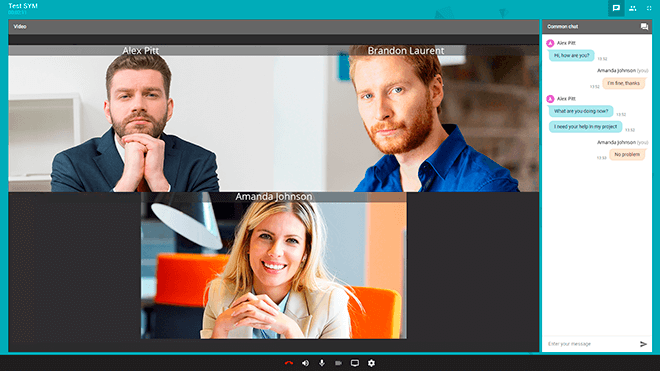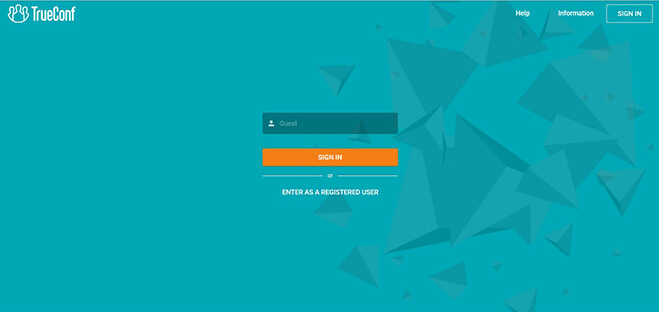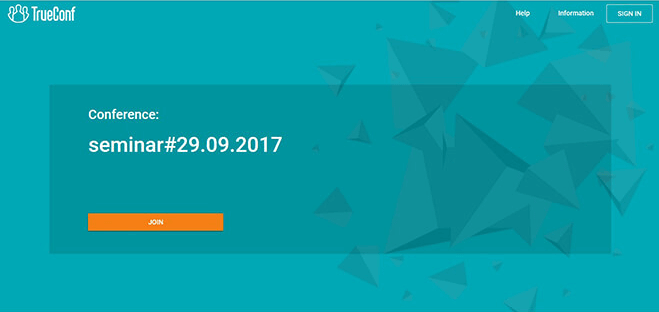Modern culture is based on the principle of information exchange. At the dawn of civilization, personal communication was quite enough — prehistoric people would gather together and pass on important information to one another, creating archaic social media. The worldly-wise community members shared their experiences with the rest, while everyone could express their opinion or ask a question.
In the era of enlightened antiquity, such meetings took a complete form and became known as seminars. Over time both the name and format of such meetings still remain almost unchanged. As a rule, seminars consist of one or several key speakers who promote important information to the audience.
Nowadays it becomes increasingly difficult to hold private meetings in the era of globalization and rapid development of technologies, as agility and territorial disunity carry their weight. Qualified speakers cannot be present in several places at the same time or move at lightning speed from one distant place to another. However, modern telecommunications technologies help people get connected.
Content
The first attempts to organize collective communicating sessions without personal presence were made using ordinary telephone networks. Group calls partly solved the problem of remote communion but couldn’t replace real seminars in any way — it turned out that not so much information can be transmitted by voice. Thanks to conference calls, a relatively large group of people could attend a lecture and even ask relevant questions, but there were no such crucial aspects as document collaboration, slide show, not to mention visual contact. As an option, identical copies of paper-based materials could be emailed to all telephone discussion participants before every group call, but flexibility and efficiency are lost. Besides, these phone calls were really difficult to arrange and synchronize (turn over pages, search for necessary slides simultaneously, etc.).
High-quality remote seminars have always been essential for the education sphere. Together with the onset of the scientific and technological revolution in the 1950s, economically developed countries faced a tangible shortage of IT experts. At the same time, classic universities had a limited number of seats and couldn’t drastically increase their productivity. In the USA, this problem was planned to be solved by marketing computer technologies and digital data transmission networks. Long-term studies in this regard resulted in PLATO (Programmed Logic for Automated Teaching Operations) which was developed by a group of experts from the University of Illinois and Control Data Corporation. This technology can be basically called a prototype of modern online seminars (webinars). PLATO was first implemented in the early 1960s and had been used in a modified form until 2006.
For the first time ever, a single platform managed to unite and promote such features as a web forum, online chat, instant messaging service, email, remote desktop, document collaboration, and much more. Initially, voice discussion wasn’t available, but later versions also obtained this feature.
In 1975, PLATO allowed running a network meeting or conference for up to 100-150 participants. However, the main problem was local network limitations — its operation required an expensive central computer, and every user endpoint cost a lot of money: $12,000 in the mid-70s (equivalent to about $60,000 in 2018), which significantly limited the audience coverage.
PLATO led to many learning technology breakthroughs. Webinars, as they are presently understood, were boosted in the 1990s — the period of affordable global data transmission channels based on TCP/IP protocols. One of the first solutions of this kind was CU-SeeMe designed to integrate U.S. general education schools. It allowed organizing video conferencing based on public connection channels. This system was also intended for remote learning and holding remote seminars in real time.
The next big step in the history of webinar development was LiveShare Plus developed by PictureTel in 1995 (acquired by Poly in 2001). The software was installed on a Windows-based computer and provided text messaging, remote desktop, whiteboard, file sharing, and other features.
Pricing was relatively affordable — just under $250 for a one PC license (equivalent to $400 in 2018). A year later, Microsoft had been marketing its own NetMeeting communication client with similar functionality, which was embedded directly into Internet Explorer, formed its integral part, and didn’t require additional license purchasing. However, both LiveShare Plus and NetMeeting didn’t provide voice conferencing. Such a feature appeared in Auditorium presented by PlaceWare (which was separated from Xerox PARC) in 1997. One PC license cost $150. In addition to the said functionality, it was also possible to share graphic images and presentations online, make notes, leave comments in chat, and make audio remarks.
Back in 1997, Auditorium allowed uniting an audience of up to 1,000 people in one seminar or conference for the first time in the industry.
Other companies also were marketing similar solutions. At about the same time, the term “webinar” began to be used; it’s formed by merging the words “web” and “seminar”. In the late 1990s and early 2000s, there were attempts to appropriate this name. In 1998, a certain Eric R. Korb registered the WEBinar trademark (Certificate No. 75478683, USPTO), the rights to which were transferred to InterCall. In 2006, Learn.com registered the term “webinar” as a TM (Certificate No. 78952304, USPTO). However, in 2007, both applications were canceled, and since then, the word “webinar” is in the public domain in many variations. In February 1999, ActiveTouch rolled out the first webinar service with WebEx Meeting Center video communication, and changed its name to WebEx the same year.
However, technologies for webinars began to develop most actively in parallel with the widespread penetration of broadband access, which made video conferencing accessible to everyone. In 2003, Citrix acquired Expertcity with its GoToMyPC and GoToAssist products, based on which Citrix GoToMeeting, their own webinar solution, was created a year later. In 2005, Adobe Connect (based on the solutions by Macromedia, the company it had acquired) offered to launch Adobe System. In 2007, Cisco acquired WebEx for $3.2 billion, which gave an additional impetus to the webinar product development.
From this point on, the webinar solution marketing takes a modern look. Today, there are more than 50 different web conferencing solutions on the market.
What is the future of webinars? There are several ways to move forward.
Be that as it may, we see more and more information generated in the modern world with less and less time to receive and process it. In this difficult situation, the webinar is the tool that allows you to find a fairly good compromise and gives you the opportunity to gain new knowledge with no harm to your core business.
Today, online seminars or webinars rank among the most efficient tools for remote learning and doing business.
Webinar may have several definitions, however, from our point of view, the following definition is most correct: “A webinar is an online group training session”.
Live communications are difficult to replace, but webinar technologies can make the conferencing process as close to reality as possible, with webinar features evolving as technology develops.
Webinar implies, broadly construed, a whole range of possibilities:
Modern webinars may incorporate features like participant pre-registration, calendar invitations, digital signage options, integration with legacy endpoints, etc. Webinars should be simple for users to join the meeting effortlessly.
The features mentioned above are not obligatory for all webinar platforms: in fact, most platforms offer quite a limited functionality.
Online seminars are becoming more and more popular every year. This meeting format is very convenient for both seminar hosts and attendees: it allows you to participate in the event from any location without leaving your home or workplace. Thanks to webinar technologies, you no longer have to worry about conference space rentals, coffee breaks, and relocation. Today, any webinar is just one click away.
Sales. You can use such online meetings to present your product to potential customers or inform regular clients about new offers. You can also offer participants a discount or a small gift as a way to increase interest toward the meeting.
Education. Educational webinars have become very popular during the COVID-19 pandemic. They proved to be a great solution for both fast learning cycles in small groups as well as for entire specialized departments with dozens of students.
Content, product or service promotion. Would you like to expand your audience through popular social media? Organize a webinar about your business in two clicks, and stream it on Facebook, Twitter, YouTube and other platforms. Share useful knowledge with your subscribers, and they will repay you through likes and loyalty.
Free Tips. Share useful ideas and experiences with your audience. You may be able to help someone by telling them about your business and services. This way you will gain new customers or followers.
Business meetings. Hold a webinar with your colleagues and discuss your company's progress. In the past, such negotiations often involved traveling several hundred kilometers and incurring costs for accommodation and food. Now, however, this type of expense can be saved in one click.
A webinar requires all audiences to have special software: either a proprietary application or an application embedded directly into your browser. The latter case can be exemplified by the Flash technology created back in 1996. Until recently this technology has been used quite successfully for organizing webinars. However, a number of significant flaws (due to the basic features of this technology) led to the fact that even Adobe Systems pronounced Flash outdated. In 2013, updates for Android ceased to be released. By 2020, the life cycle of all other software options officially ended.
Flash’s flaws include unnecessarily high load on the central processor, low efficiency of Flash Player, frequent failures of applications due to poor error control, etc. As a result, Flash-based webinars are decreasingly used.
Flash has been replaced by WebRTC technologies supported by Google, Mozilla, Opera Software. WebRTC allows you to hold webinars directly from your browser.
At the same time, WebRTC has its flaws that don’t always allow using those solutions to organize full-featured online seminars with a large audience. For example, it’s difficult to arrange simultaneous presence and presentation of several speakers or send an invitation to become a speaker for a listener who wants to ask a question via video link. The difficulties are related to the fact that transcoding needs to be run on the server. As a result, pricing for webinars with a large number of people will be very high. In addition, WebRTC doesn’t provide content capturing and displaying tools (with the exception of updated Chrome and Firefox), which means that a full-fledged training process will require third-party software products, let alone software that needs to be installed for a host.
Webinars based on proprietary software of reputed companies are considered to be the most popular. Examples include Adobe Connect, Cisco WebEX, Fuze Meeting, IBM Sametime, TrueConf, Zoom, etc.
However, there are significant differences, e.g. types of operating systems supported (not all of them support Linux or macOS), mobile sign-in, data protection and encryption, compatibility with additional third-party software, etc.
Another important feature is the maximum number of supported connections, which determines how many users will be able to participate in webinars. This indicator ranges from a few dozen (Google Meet, TeamViewer) to several thousand (WebEX, Adobe Connect). An important indicator is the number of possible speakers, which also varies significantly depending on the platform.
It isn’t so much technical limitations, but the fact that a large number of webinar participants don’t always have the best effect on its quality. According to the experience, if more than 50 users participate in an online seminar, the speaker's skills and abilities to hold an audience play the leading role. After all, answering questions from several dozen people can dramatically stretch out over time, while webinars are up to one and a half hours optimally. In this regard, webinars aren’t much different from the legacy seminars.
